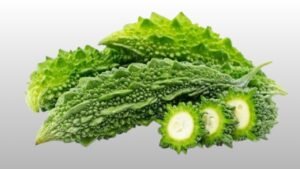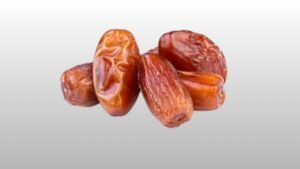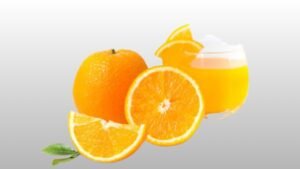Table of Contents
WHAT IS KIDNEY STONE ?
A kidney stone is a hard, crystalline mineral material formed within the kidneys or urinary tract. It occurs when there is an imbalance in the substances that make up urine—particularly when there’s too much waste and not enough liquid to dissolve it. This causes minerals and salts to stick together and form stones.
WHAT ARE TYPES OF KIDNEY STONE ?
Kidney stones (renal calculi) are hard deposits made of minerals and salts that form inside your kidneys. They can vary in size, shape, and composition. Understanding the types of kidney stones helps guide treatment and prevention strategies. Here’s a detailed breakdown:
1. Calcium Stones (Most Common – 70–80%)
These are the most common type, making up about 70–80% of all kidney stones.
Subtypes :
• Calcium Oxalate Stones (most common)
- Form when calcium combines with oxalate in the urine.
- Can occur due to high oxalate intake (e.g., spinach, nuts), low fluid intake, or certain metabolic disorders.
- Tend to be hard and irregular in shape.
• More common in people with certain metabolic conditions like renal
tubular acidosis.
• Often associated with alkaline urine (high pH).
Causes :
• High calcium or oxalate in urine.
• Low urine volume (dehydration).
• High intake of oxalate-rich foods (e.g., spinach, nuts, chocolate).
• Certain conditions (e.g., hyperparathyroidism).
Risk Factors :
• High sodium or animal protein intake.
• Inadequate fluid intake.Certain genetic or metabolic disorders.
Appearance : Hard, spiky or smooth stones; vary from light brown to dark.
2. Uric Acid Stones (5–10%)
Causes :
• High levels of uric acid in urine.
• Acidic urine pH.
• High-purine diet (red meat, shellfish).
• Conditions like gout or chemotherapy side effects.
Risk Factors :
• Dehydration.
• Diabetes or metabolic syndrome.
• Gout.
Appearance : Smooth, soft, yellow to reddish-brown stones; may not be visible on X-ray.
3. Struvite Stones (10–15%) – “Infection Stones”
• Composition : Magnesium, ammonium, and phosphate.
Causes :
• Chronic urinary tract infections (UTIs), especially with urease-producing bacteria (e.g., Proteus, Klebsiella).
• Alkaline urine environment.
Risk Factors :
• More common in women (due to higher UTI risk).
• Indwelling catheters.
Appearance : Large, branching (staghorn) stones that can fill kidney; often fast-growing.
4. Cystine Stones (Rare – <1%)
Causes :
• Genetic disorder called cystinuria, where kidneys excrete too much cystine (an amino acid).
Risk Factors :
• Inherited condition; runs in families.
• Often begins in childhood or adolescence.
Appearance : Yellowish, waxy, smooth stones; can form clusters.
WHAT ARE CAUSES OF KIDNEY STONE
The formation of kidney stones is a complex process that can result from various metabolic, dietary, genetic, and environmental factors. Here’s a detailed breakdown of the major causes of kidney stones:
1. Dehydration (Low Fluid Intake)
Mechanism :
When you don’t drink enough water, your urine becomes concentrated.
This allows minerals and salts to crystallize and form stones.
Risk Increases With :
• Hot climates.
• Vigorous exercise without rehydration.
• Medical conditions causing fluid loss (e.g., diarrhea, vomiting, sweating).
2. Dietary Factors
A. High Oxalate Intake:
• Foods like spinach, nuts, beets, tea, and chocolate are high in oxalates.
• Oxalate binds with calcium in urine to form calcium oxalate stones.
B. Excessive Salt (Sodium) :
High sodium intake increases calcium in urine, promoting stone formation.
C. High Animal Protein Diet :
• Increases uric acid and lowers citrate (a natural stone inhibitor).
• Makes urine more acidic — a risk for uric acid and calcium stones.
D. Low Calcium Diet :
• Paradoxically, low dietary calcium can increase oxalate absorption in the gut.
3. Metabolic and Genetic Conditions
A. Hypercalciuria:
Excess calcium in the urine — often genetic.Can lead to calcium oxalate or calcium phosphate stones.
B. Hyperoxaluria:
Too much oxalate in urine, either genetic or from excessive dietary oxalate or intestinal diseases.
C. Hyperuricosuria:
High uric acid in urine; can cause uric acid or calcium oxalate stones.
D. Cystinuria:
A rare inherited disorder where kidneys excrete too much cystine (an amino acid), forming cystine stones.
E. Renal Tubular Acidosis:
Kidney disorder causing alkaline urine and leading to calcium phosphate stones.
4. Urinary Tract Infections (UTIs)
Especially by urease-producing bacteria (Proteus, Klebsiella, Pseudomonas):
• Break down urea into ammonia, increasing urine pH.
• This favors the formation of struvite stones (magnesium ammonium.
phosphate).
5. Certain Medical Conditions
Gout : Increases uric acid in blood and urine.
Obesity and Metabolic Syndrome : Alter urine composition (more uric acid, less citrate).
Diabetes Mellitus : Promotes acidic urine.
Inflammatory Bowel Disease (IBD) or Bariatric Surgery : Increases oxalate absorption (enteric hyperoxaluria).
6. Medications and Supplements
Some drugs increase the risk of kidney stones :
• Loop diuretics (e.g., furosemide)
• Topiramate (for seizures/migraines)
• Calcium or Vitamin D supplements (in high doses)
• Indinavir (an HIV medication)
• Excessive vitamin C (converts to oxalate)
7. Family History and Genetics
• If kidney stones run in the family, your risk increases.
• Some rare genetic conditions (e.g., primary hyperoxaluria, cystinuria)
cause early and recurrent stone formation.
8. Sedentary Lifestyle or Prolonged Immobility
• Leads to bone demineralization and increased calcium in urine.
• Also reduces urine flow, increasing crystal aggregation.
9. Anatomical Abnormalities
• Conditions like medullary sponge kidney or horseshoe kidney may impair
urine flow, promoting stone formation.
Summary :
| Cause Category | Examples |
| Hydration | Low water intake, fluid loss |
| Dietary | High oxalate, salt, animal protein, low calcium |
| Metabolic | Hypercalciuria, hyperoxaluria, hyperuricosuria |
| Infections | Chronic UTIs with urease-producing bacteria |
| Medical Conditions | Gout, diabetes, IBD, obesity |
| Genetic Disorders | Cystinuria, primary hyperoxaluria |
| Medications | Topiramate, calcium supplements, vitamin C |
| Lifestyle | Sedentary habits, prolonged immobility |
TREATMENTS OF KIDNEY STONE
The approach to treating kidney stones depends on several factors, including their type, size, location, and whether they are causing pain or complications. Below is an in-depth look at various treatment options:
1. Non-Surgical (Conservative) Treatment
This method is ideal for smaller stones (typically less than 5 mm) that are likely to pass naturally.
a. Fluid Intake
• Drink 2.5 to 3 liters of water daily. • Staying well-hydrated helps to
naturally push the stone out through the urinary tract.
b. Managing Pain
• NSAIDs (like ibuprofen or naproxen) help reduce pain and inflammation.
• Stronger painkillers (like opioids) may be necessary in severe cases.
• Antispasmodics can ease spasms in the urinary tract to relieve discomfort.
c. Medications to Help Stone Passage
Alpha-blockers (such as tamsulosin) help relax the ureter muscles, making it easier for the stone to move through the urinary system.
2. Medication-Based Treatment for Specific Stone Types.
Treatment can vary based on the chemical composition of the stone, which is usually identified through lab tests or imaging.
a. Calcium-Based Stones (Oxalate or Phosphate)
• Thiazide diuretics help lower calcium levels in urine.
• Potassium citrate binds with calcium and reduces the risk of stone.
formation.
• Avoid foods rich in oxalates like spinach and nuts.
b. Uric Acid Stones
• Allopurinol can decrease uric acid levels in the body.
• Urine can be alkalinized using potassium citrate or sodium bicarbonate to
help dissolve the stones.
• A low-purine diet (reducing red meat, seafood) is often recommended.
c. Struvite Stones
• These are usually the result of chronic urinary infections.
• Treating the infection with antibiotics is essential.
• Surgery is often required to remove the stone completely.
d. Cystine Stones
• Encourage excessive fluid intake to dilute urine.
• Urine alkalinization helps make cystine more soluble.
• Drugs like tiopronin or penicillamine may be used to lower cystine levels.
3. Surgical and Minimally Invasive Options
These are recommended when
• Stones are too big to pass on their own.
• There’s a blockage, infection, or severe pain.
• Non-surgical treatments fail.
a. Shock Wave Lithotripsy (ESWL)
• Utilizes shock waves to shatter the stone into smaller pieces.
• Ideal for stones under 2 cm, especially in the kidney or upper ureter.
• A non-invasive and often outpatient procedure.
b. Ureteroscopy (URS)
• A small scope is inserted via the urethra into the bladder and ureter.
• A laser (e.g., Holmium laser) breaks the stone, or it is physically removed
with a tool.
• Works well for stones in both the ureter and kidney.
c. Percutaneous Nephrolithotomy (PCNL)
• Designed for larger or complex stones.
• Requires a small incision in the back to reach the kidney directly.
• The stone is fragmented and removed, often in a hospital setting.
d. Open or Laparoscopic Surgery
• Rare today due to less invasive options.
• Used only for very large or complicated stones.
4. Preventing Future Stones
To lower the risk of recurrence:
• Maintain adequate hydration daily.
• Make dietary adjustments based on your stone type.
• Have regular check-ups and imaging if you’re prone to stones.
• Analyze urine over 24 hours to identify risk factors.
When to Seek Emergency Care
• Contact a doctor immediately if you experience:
• Intense, persistent pain
• Fever or chills, which may signal an infection
• Blood in your urine
• Vomiting or inability to keep fluids down
READ NEXT : HOW TO TREAT HAIR FALLS


